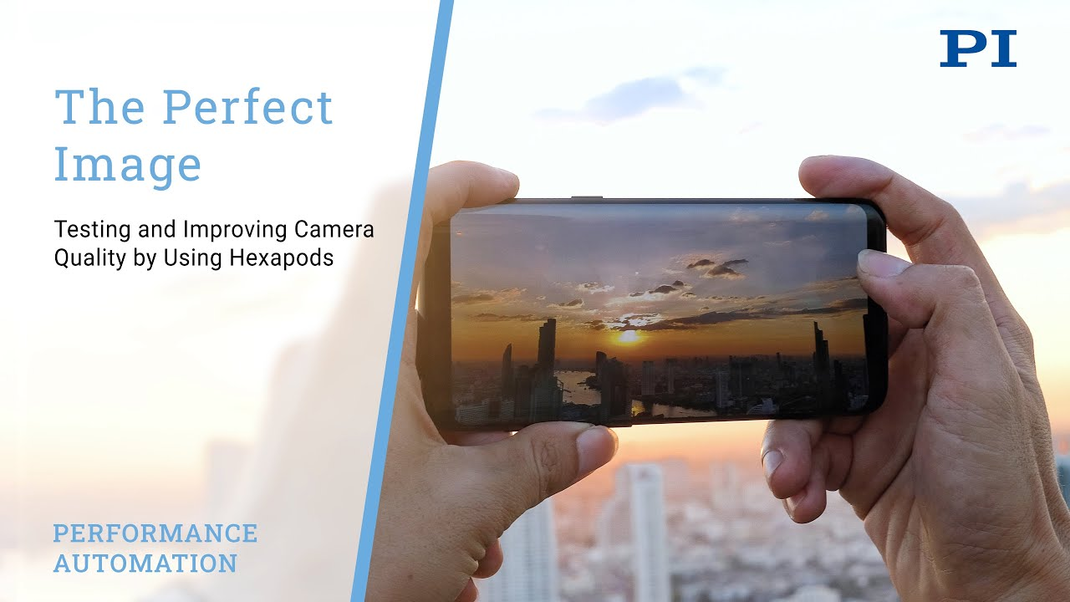Motion Simulation with Hexapods for Reliable Testing and Improving Image Quality
Taking sharp pictures despite poor lighting conditions, taking snapshots without blurring, recognizing traffic signs and road markings, or identifying dangerous situations with specific systems - all of this is possible today with the help of modern cameras. But how good is the still and video image quality of a camera or smartphone? And how do they compare with models from other suppliers?
End users, manufacturers of smartphones, drones, AR/VR headsets, and cameras, companies in automotive or shipping, and medical and security sectors - they all place high demands on the quality of the still and video images and are looking for answers to these questions to enable innovations in their sectors.
In order to provide answers to these questions, it needs to be tested how well the image stabilization components used can compensate for real movements and so avoid blurred images. For example, position sensors or gyroscopes, acceleration sensors, camera modules or image sensors, LIDAR sensors or devices for operation on board ships are tested.
In the testing procedures thousands of images are taken and evaluated – always under the same conditions! The challenge is not only repeatability, but also to simulate fast movements with different speeds and different sequences of movements - from the shaking hands of the photographer to the vibrations of a vehicle or the flight of a drone.
A task for hexapods. The six-axis positioning systems meet the requirements for motion axes, dynamics, path accuracy, and repeatability; and they simulate real operating conditions precisely and quickly. In close cooperation with the customer, PI analyzes the requirements for the hexapods for the respective test procedure and test object and qualifies them on site for the complex motion profiles. In addition, PI offers a wide range of hexapods and modification options in order to react quickly to changing requirements for test equipment and operating conditions of the cameras.


